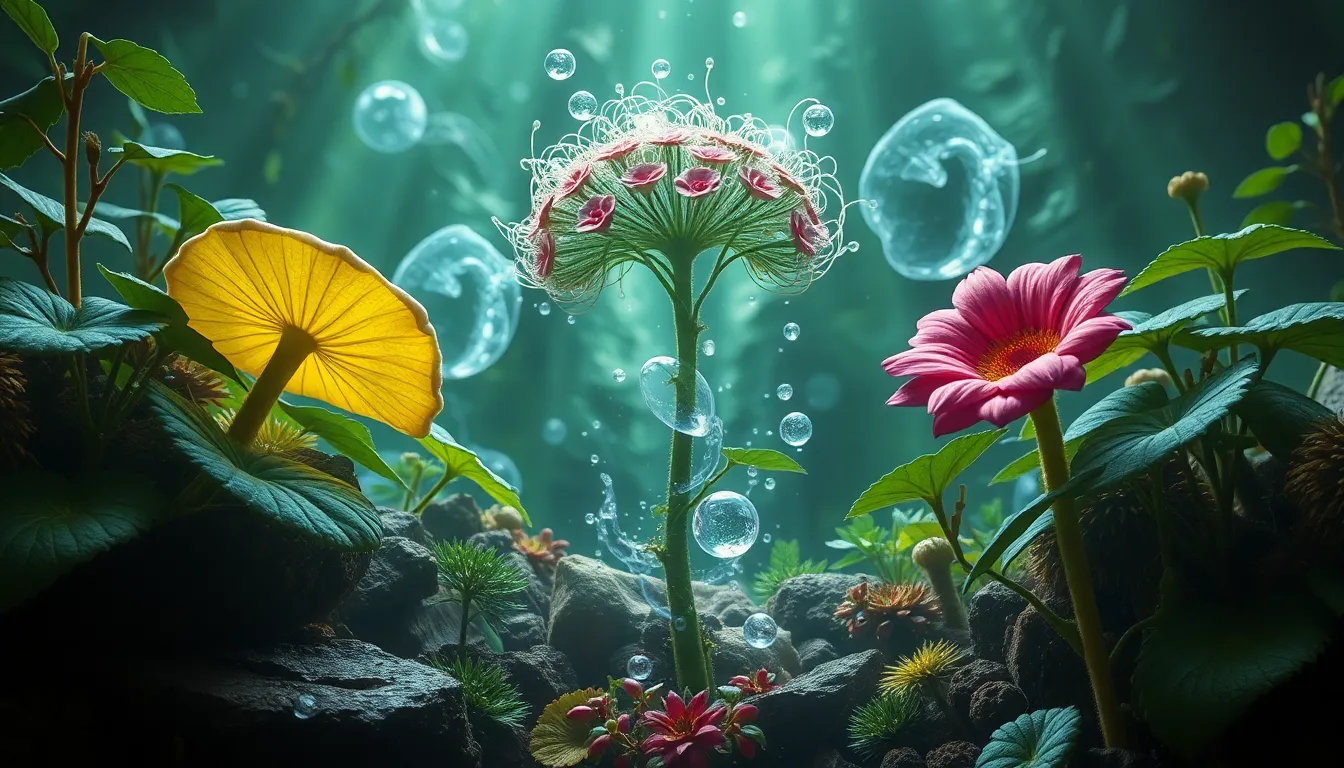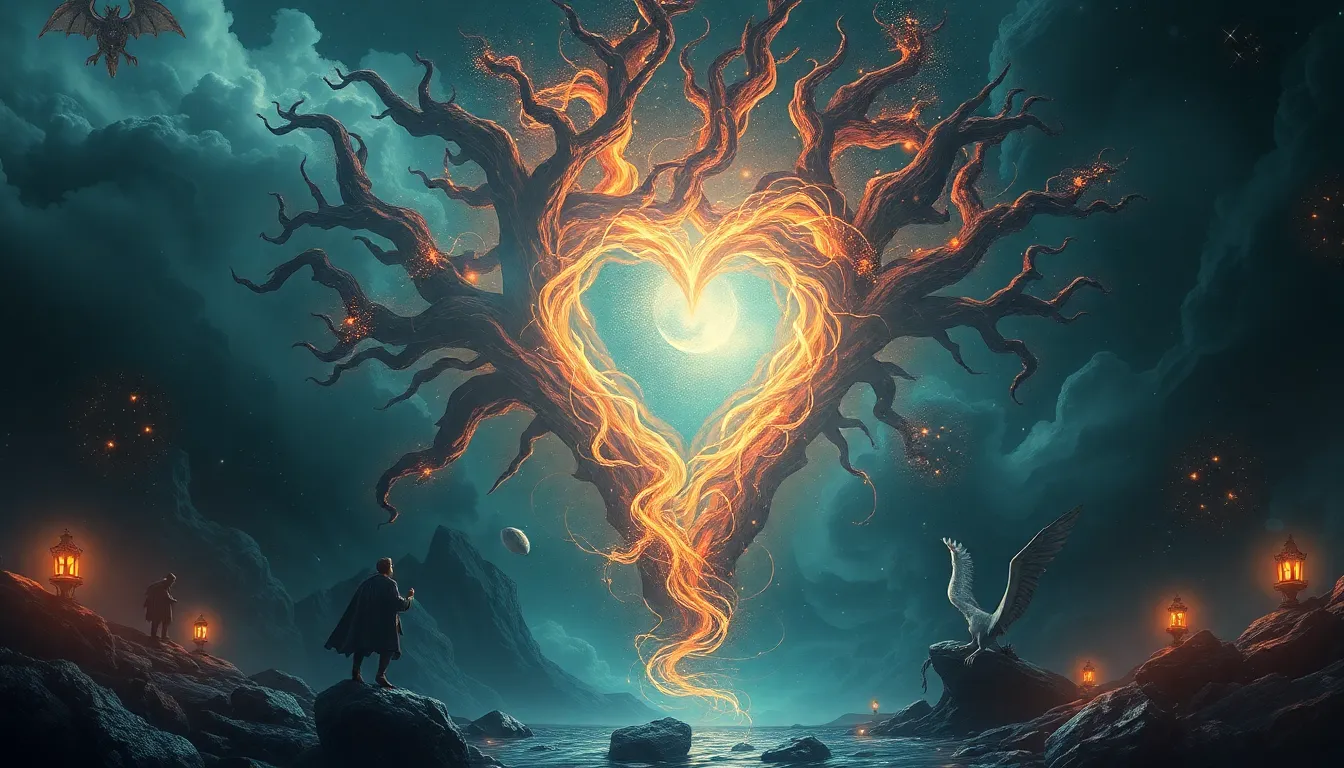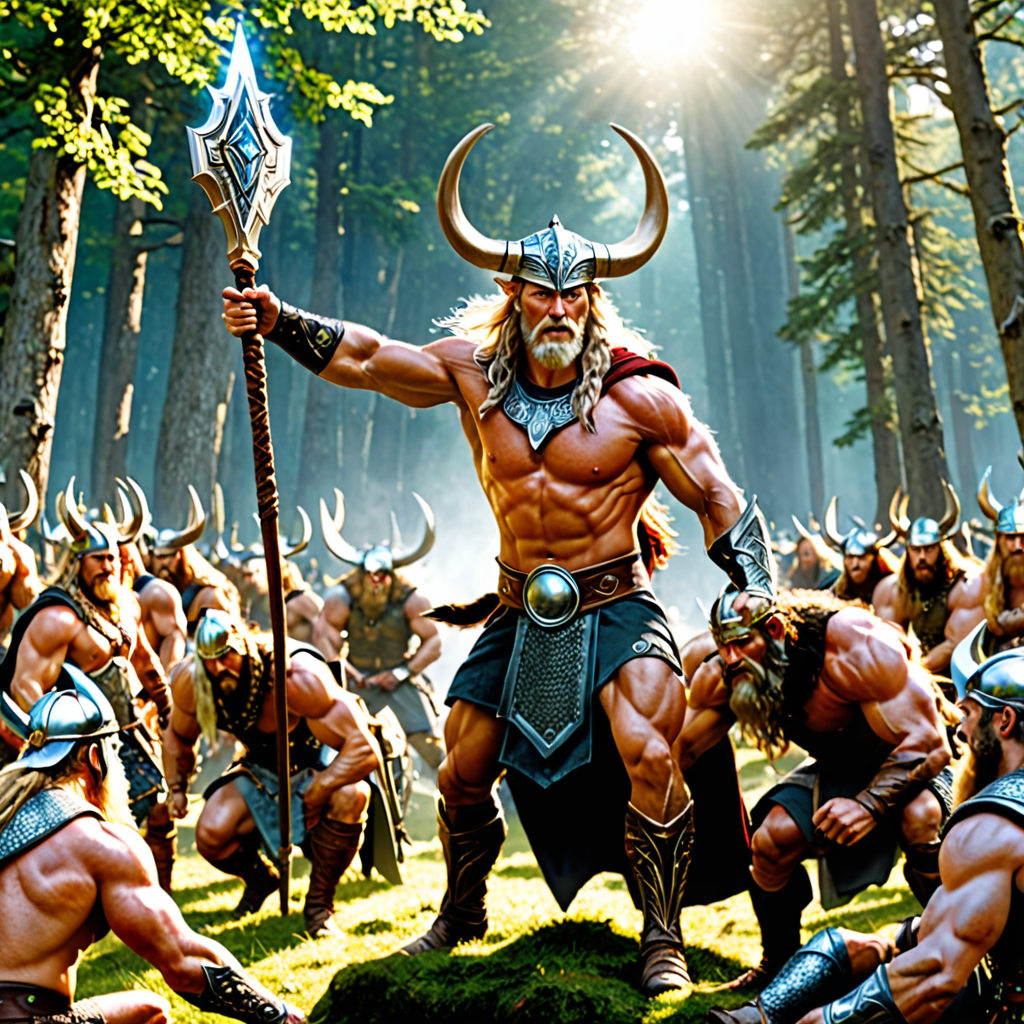The Enchanted Isle of Circe: Sorcery and Transformation in Myth
I. Introduction to Circe and Her Mythological Context
Circe, a prominent figure in Greek mythology, is renowned for her enchanting beauty and formidable magical abilities. She is often depicted as a powerful sorceress, skilled in the arts of transformation and potion-making. Her story is woven into the fabric of ancient literature, particularly in Homer’s “Odyssey,” where her character plays a crucial role in the protagonist’s journey.
Circe’s significance extends beyond mere enchantment; she embodies themes of power, femininity, and the complex relationships between mortals and gods. Her character serves as a gateway to exploring deeper themes of transformation, both literal and metaphorical, that resonate throughout mythology.
II. The Isle of Aiaia: A Setting of Enchantment
Circe resides on the mystical Isle of Aiaia, a place shrouded in magic and mystery. This enchanting island is often depicted as lush and vibrant, filled with potent herbs and magical fauna. The landscape of Aiaia plays a vital role in Circe’s enchantments, serving as both a backdrop to her sorcery and a reflection of her character.
Aiaia symbolizes isolation, a sanctuary where Circe can practice her magic away from the judgment of the outside world. This isolation is a double-edged sword, granting her freedom yet also highlighting her loneliness. The island features beautiful yet dangerous elements, such as:
- Dense forests filled with magical creatures
- Clear waters that conceal many secrets
- Vibrant flowers with transformative properties
The landscape is not merely a setting; it is integral to Circe’s identity as a sorceress, where every hill and valley contributes to her narrative of enchantment.
III. Circe’s Powers: The Art of Sorcery
Circe’s magical abilities are vast and diverse, showcasing her as one of the most powerful sorceresses in mythology. She wields the power to transform humans into animals, a skill that she employs on Odysseus’s crew when they invade her island. Her magic is often associated with:
- Potions that evoke profound changes
- Herbs that enhance her sorcery
- Enchantments that manipulate reality
When compared to other mythical sorceresses, such as Medea and Morgan le Fay, Circe stands out for her unique blend of beauty and danger. While Medea is driven by vengeance and Morgan le Fay embodies the archetype of the femme fatale, Circe’s character is more nuanced, reflecting both nurturing and destructive qualities.
IV. Transformation as a Central Theme
Transformation is a recurring theme in Circe’s mythos, most notably illustrated through the metamorphosis of Odysseus’s crew into swine. This act serves multiple purposes, including punishment for their greed and a commentary on human nature.
The symbolic meanings behind transformations in mythology can be interpreted in various ways:
- Punishment: Transformations often serve as a consequence for wrongdoing, highlighting moral lessons.
- Liberation: Conversely, transformations can also represent freedom from societal constraints, allowing characters to discover new identities.
This duality of transformation in Circe’s narrative evokes questions about identity, power, and the essence of humanity.
V. Circe’s Relationships with Heroes and Gods
Circe’s interactions with heroes and gods reveal the complexity of her character and the power dynamics at play. Her encounter with Odysseus is particularly significant, as it showcases a blend of attraction, manipulation, and respect. Odysseus initially falls victim to her magic, but their relationship evolves into one of mutual understanding and partnership.
Other notable figures in Circe’s mythology include:
- Hermes: The messenger god who aids Odysseus in resisting Circe’s enchantments.
- The Sun God: Circe’s father, who represents a connection to divine power and legacy.
These relationships contribute to Circe’s identity as a sorceress, illustrating her agency and the complexities of her character beyond mere villainy.
VI. The Role of Women in Myth: Circe as a Feminine Archetype
Circe embodies a powerful feminine archetype in mythology, representing both the nurturing and destructive aspects of womanhood. Her character challenges traditional gender roles and explores the complexities of female power. Unlike male figures who often wield power through violence or dominance, Circe’s power lies in her intelligence, cunning, and mastery of magic.
This contrast highlights the nuances of female representation in mythology and offers feminist interpretations of Circe’s character. She can be seen as:
- A symbol of female autonomy and strength
- A representation of the dangers of underestimating women
- A critique of patriarchal narratives surrounding femininity
Circe’s story encourages a reevaluation of female characters in mythology, prompting discussions about empowerment and agency.
VII. Legacy of Circe: Influence in Literature and Pop Culture
Circe’s legacy endures through her presence in both classical and contemporary literature. Her character has inspired numerous adaptations across various mediums, reflecting society’s ongoing fascination with sorcery and transformation. Notable examples include:
- Madeline Miller’s novel “Circe,” which reimagines her story through a feminist lens.
- Film adaptations that bring her enchanting world to life.
- Graphic novels that explore her character’s complexities.
These adaptations highlight the timeless appeal of Circe as a symbol of transformation and power, resonating with modern audiences.
VIII. Modern Interpretations of Circe’s Myth
In recent years, there has been a rise in feminist retellings and reimaginings of Circe’s myth. Contemporary works often focus on themes of autonomy, agency, and the struggle against patriarchal structures. Authors and creators explore Circe’s character as a lens through which to view modern societal issues, such as:
- The quest for self-identity
- The challenges of female empowerment
- The consequences of societal expectations
These interpretations breathe new life into Circe’s myth, allowing her to resonate with today’s audiences and encouraging discussions about gender and power.
IX. The Intersection of Myth and Psychology
Circe’s powers and transformations can also be examined through a psychological lens, offering insights into the human experience. The archetypes present in her story reflect universal themes that resonate across cultures and time periods. Circe represents:
- The archetype of the wise woman or healer
- The archetype of the temptress, embodying both allure and danger
- The transformation of the self, highlighting personal growth and change
These archetypes are relevant to human experience, echoing the struggles and complexities individuals face in their own journeys of self-discovery and empowerment. Circe’s narrative encourages introspection and contemplation of the transformative power of both magic and personal agency.



